-
Posts
1,176 -
Joined
-
Last visited
Content Type
Profiles
Forums
Articles
Gallery
Downloads
Events
Posts posted by Goods
-
-
Had our chapter of the IBA’s hammer-in today at my place:
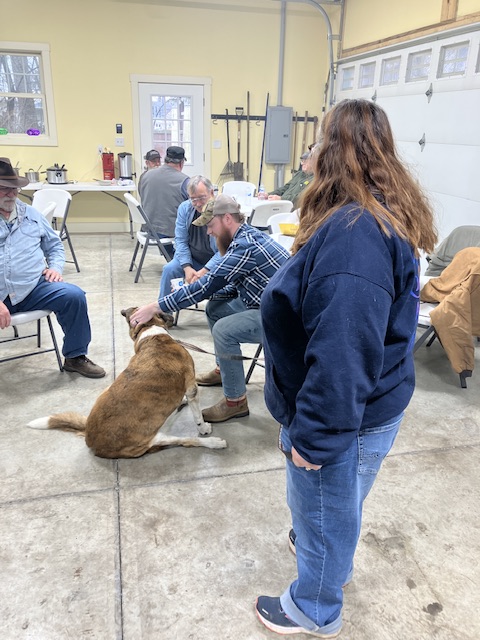
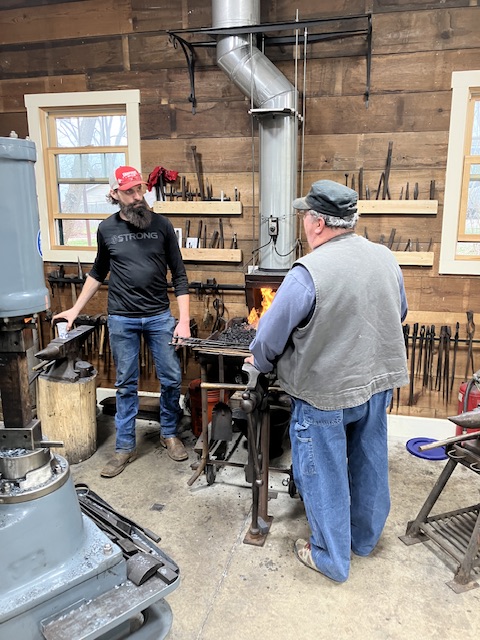
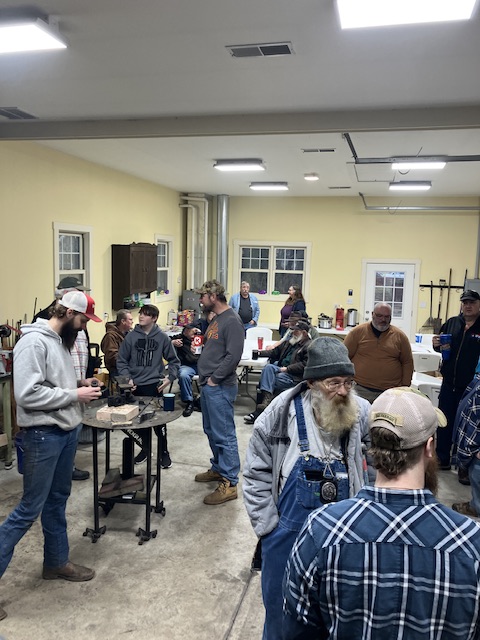
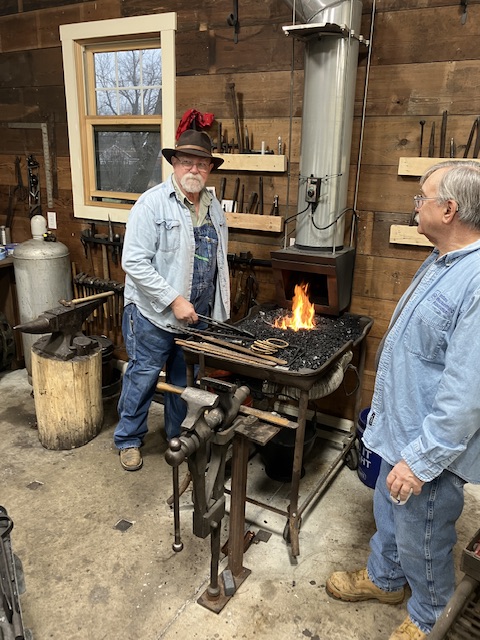
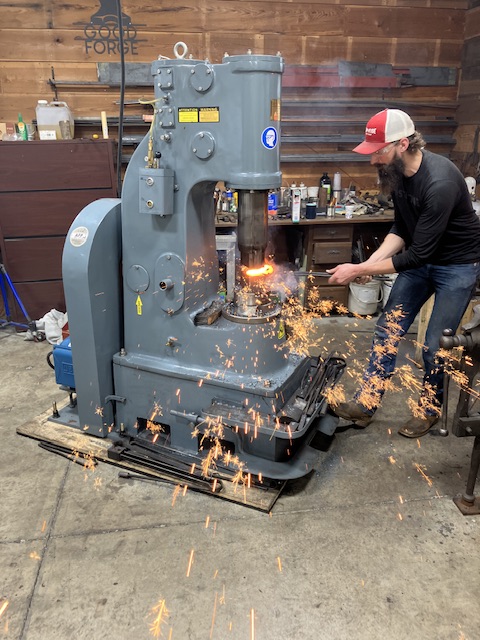
(last pic is of Josh, an IFI member, setting a weld on a rasp tomahawk with the power hammer.)
Probably hand around 30 in attendance and I’m pretty sure everyone had a good time. I know I enjoyed it, and no one should have left hungry!
I started everything off by drawing out a die guide post for a knife on the power hammer:
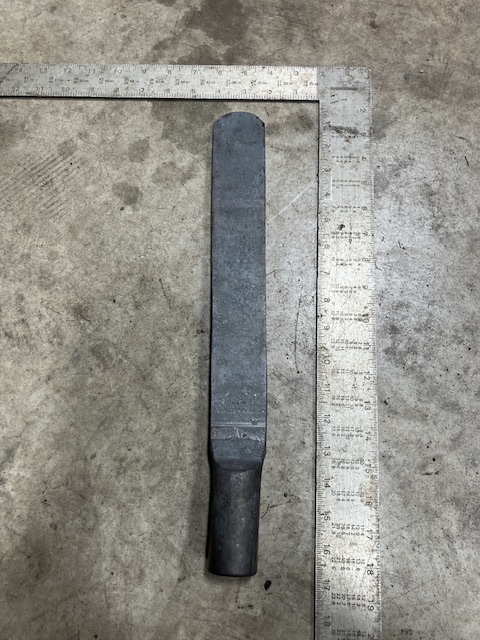
It’s at 1/4”x1-3/4”x~12” of 52100.
Then after most everyone left, I started on a 90deg top tool:
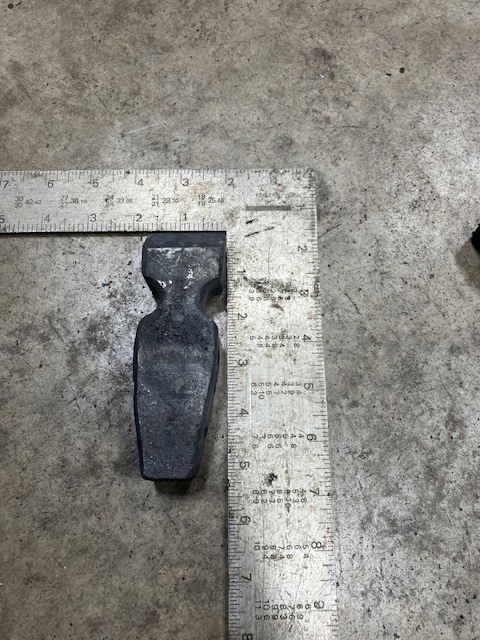
Still have a lot of work to do on both, but not sure when I’ll have time in the next two months to do anything forging.
Keep it fun,
David
-
John, first welcome aboard.
Second, don’t give up on the forge yet! They are getting surprisingly good reviews here. Truthfully, if it got that billet up to forge welding heat, it will definitely reach normal forging temperatures. I’m not a gas’s forge guy, but if it’s giving you fits, there are several experts here that can help you get it tuned up. Just ask.
Keep it fun,
David
-
Also, once you fire is going, don’t add green coal to the center. Work the coal into the fire from the edge. That way the green coal starts to coke as it’s moved to the center and is already coked before it’s in the heart of the fire.
F+B, the PVC pieces were 4” drain pipes couplers. I found them in the outside garden section of a big box store. They were the lowest cost option compared to anything in the plumbing section. It would have been cheaper to buy full length 4” PVC, if I needed to make a lot. The short pre-cut sections of pipe just had to high of a convenience charge.
Keep it fun,
David
-
In our group’s shop, there is an electric blower mounted onto the intake of a hand crank blower. Doubt it’s an original setup, but I couldn’t get a clear view of it to see how it’s connected. Pretty basic I imagine… It works just fine under electric or hand crank and the hand crank can give a little (or big) boost of air if needed when the electric blower is running.
Keep it fun,
David
-
I got some brackets made up today for at least some of my grinder belt:
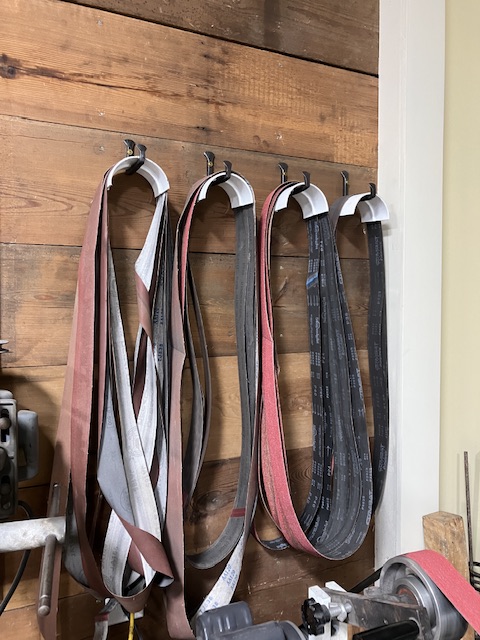
One more step towards organization! Now just have to start actually organizing…
Keep it fun,
David
-
You might check with you local saw mills. They may have large heavy gauge band saw blades that they scrap. I got a short section of one at one of our hammer-ins a few years ago:
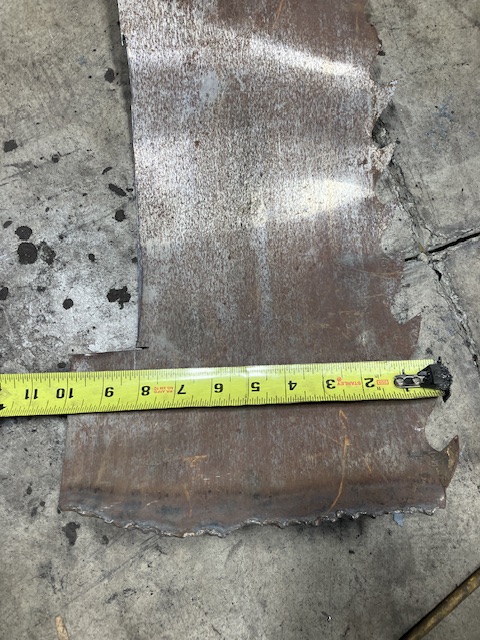
It’s right at 3/32” thick and probably 15N20. At least it’s high carbon and etches very bright in a billet.
Keep it fun,
David
-
I have a cheap pair of calipers that I use to measure the thickness, lock a half of the measurement, scribe with the caliper points from both edges, the cut between the two scribe lines. (Don’t the the quality guys here that I ever use calipers as scribes!)
keep it fun,
David
-
I’ve been holding off on getting a gas for my setup as well.
Eagerly awaiting responses,
David
-
Lary, I used 12” of 3/8” x 1” of A36 for each reign. (The reigns on my tongs tend to be on the long side. I like to be able to put both hands on the reigns when doing heavy work under the power hammer.)
Keep it fun,
David
-
Happy New Year’s all!
First project in my forge for 2023:

Sized for 1-1/4” square stock. I need to get better at making tongs, they just took ways to long for me to make.
Yes, Frosty, I did break the edges on the swage. I’m going to have to take way more of though. At the 3/8” octagon stage, I went straight to the swage and it pretty rough.
Keep it fun,
David
-
I believe Star Anvils are similar to Vulcan anvils. Cast iron with a steel face. It looks like most of the steel face is gone or delaminated. Sorry, but that one is pretty much done. $300 would be well spent elsewhere.
Trying to repair that properly into a working anvil will likely at least double the cost of the anvil, probably more getting welding rod to match up with the cast iron as a base layer for the repair. Look for a large piece of scrap steel and you’ll be better off. Learn on the improvised anvil, and save up for one that comes along. They show up a lot faster when you’re not looking or some reason.Keep it fun,
David
-
You need a volume of air not pressure. See if you can find an electric blower on the cheap. The one I use on my forge is fresh air blower for a gas furnace. Got it for free from a buddy that runs a repair business. I hooked it up to a cheap riostat(sp?) from eBay and very rarely have it above half speed with coal. A hair dryer would work, but you’ll probably need to dump a lot of the flow. Lump charcoal doesn’t take much air to get screaming hot.
Keep it fun,
David
-
I forged out a blank 1” x 2” x 6”, cut it half to get two 3” piece. Wire wheeled any scale off then filed everything square. Then tack welded the two halves together, clamped it in the post vise to measure and center punch along the parting line. Move it to my drill vice (clamping parallel to the parting line) and drilled the holes. After they were drilled, ground the welds off and then there was a bunch more filing. Round files to remove the machining lines and flat files to remove the edges of the half rounds to prevent cold shunts. Finally, clamp the halves back up with round stock in the swage for alignment and weld the handle/spring on.
Ok, that was probably more information that you were asking for…
Keep it fun,
David
-
He did pretty good, the real question is did he enjoy it?
I’ve been spending a lot of time in the forge, but mostly cleaning and organizing. Today I got a round spring swage made up:
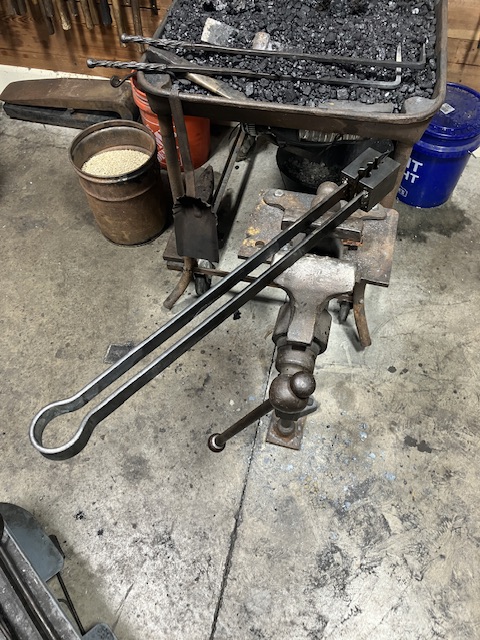
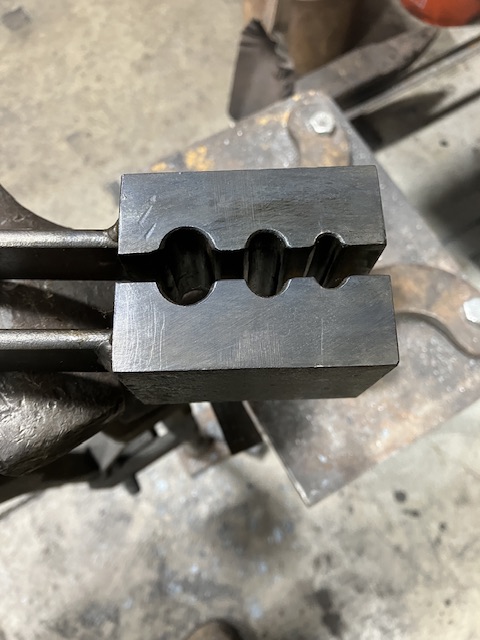
The half inch really pushed my little drill press, even with stepping up by 1/8” increments… All that left is to touch mark it, harder harden and temper.
Keep it fun,
David
-
Looks pretty good! I usually keep mine pretty sharp, but it’s not really required.
As for the scale, on my last heat, I brush it aggressively, and the just use planishing blows to get a better finish. Still a skill that needs more development for myself…
Keep it fun?
David
-
Lee, sorry, I can’t help much with the tuning, but I do have a two safety concerns. First, it looks like you son is wearing synthetic materials at the forge. Most synthetic materials are a big point of concern at the forge. Things can/will go wrong and you don’t want a hot piece of metal melting your clothes to you. Second, you need to get a heat shield on the wall behind the forge (if that’s where it’s going to stay.) You don’t want the dragons breath from the back of the forge to cook you wall. Safety first!
I can’t think of a better way to spend time with your boy. Learning together is a fun bonding experience! Look up you local ABANA affiliate. Hammer-ins are a great way to meet other smiths and get pointer you never would know you needed!
Keep it fun,
David
-
Thanks all.
Gewoon, the rails were cut and notched to sit on top/between the brackets, then welded in place. The tong rack brackets are 3/8” square stock with 1/4” x 3/4” rail. The hammer rack brackets are 1/2” square stock with two rails of 3/8” x 1” spaced 2” apart. (I can get closer pictures if you want, but my welds aren’t really worth looking at.)
Frosty, I have looped holders wedged in one the metal stand my Peter Wright anvil is on, but nothing setup for the wood stand that my Columbian anvil is on. I do most of my work on the Columbian and never developed a habit of using tool storage while forging. Often, my brush, tongs or hammer ends up 8ft away when changing operations. Then while re-heating I’m stumbling around try to find where I threw stuff. (I think some of the guys get quite a bit of entertainment just from that at our hammer-ins!)
Stay warm,
David
-
I got the hammer and tong racks finished up:
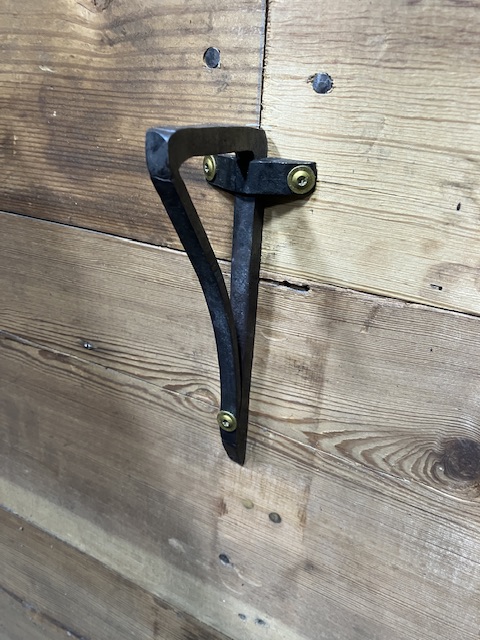
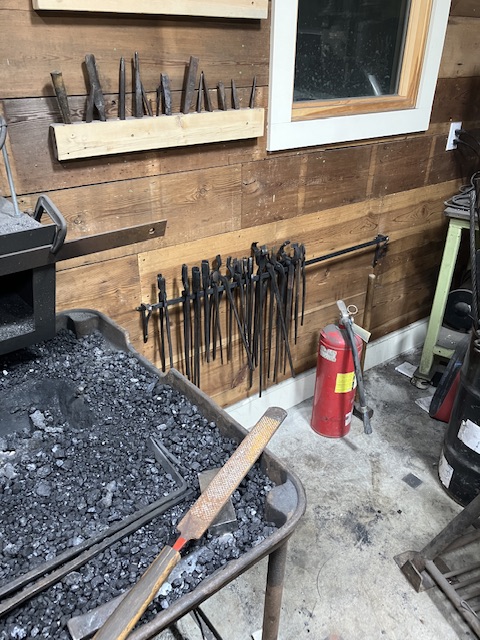
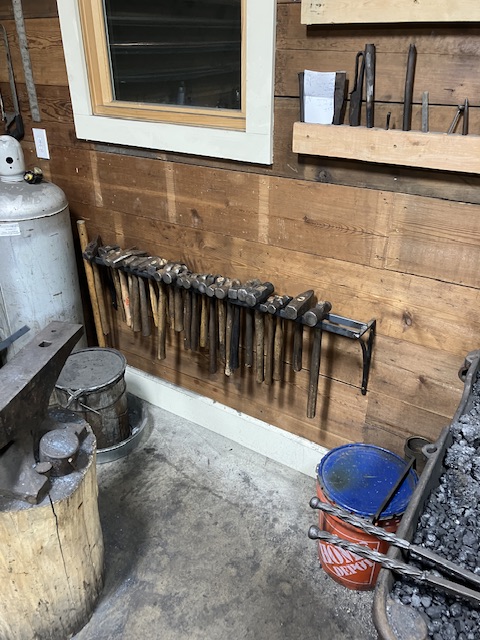
I did realize I had almost as many ball peen hammers as tongs. Of course, tongs are on the ever growing list…Keep it fun,
David
-
Only 20K euros? The is a pole with three phase on it less the 50m from my shop, but I was quoted much higher for getting it into the building.
Keep it fun,
David
-
JHCC, I think your wife is going to be pretty happy with that.
could bring myself to start the fabrication work, so I finished the next set of brackets:
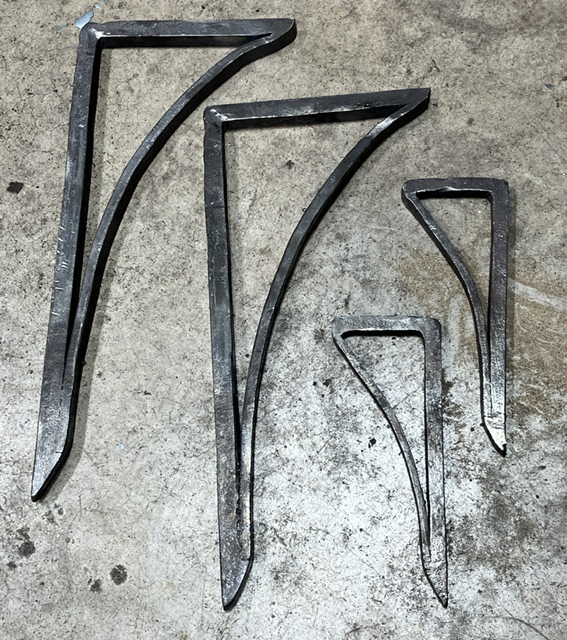
The larger set (12” tall out of 1/2”) are for a hammer rack to mount to the wall, set smaller set (6” tall out of 3/8”) is for tongs. (I really have to work on my upset corners!)
I also realized I can’t get a mounting screw in the top section of the smaller brackets. So, I had to for a set of cross brackets to screw them tight with:
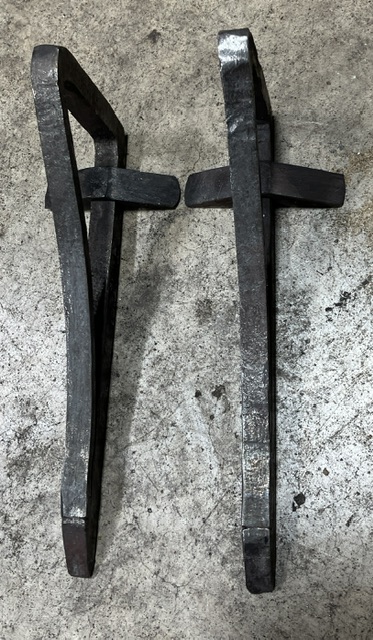 Hopefully the angled faces will line up right to hit the studs.
Hopefully the angled faces will line up right to hit the studs.
Now, I have no excuse but to do the fab work…

Keep it fun,
David
-
With nickel it would probably be fine. There is a Bladesmith in our group who regularly forge welds billets of different steels with sheets of nickel mixed in. I’ve never asked him if there is any specific technique to it though.
Keep it fun,
David
-
Got a couple more hours in the forge tonight and made two brackets as a start of a tong rack to go on the wall by the forge:
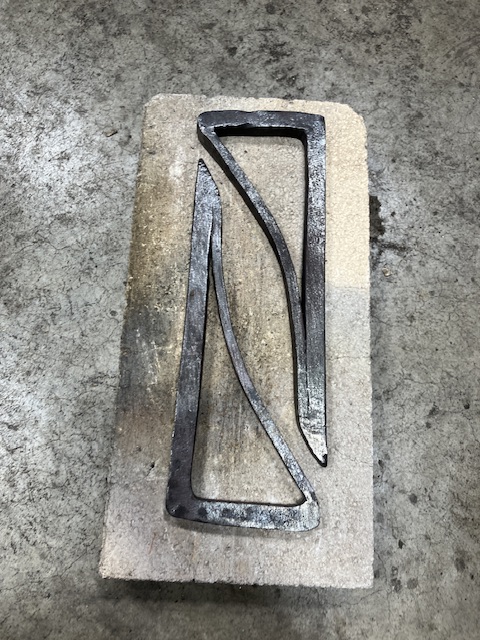
Not quite as refined as I’d like, but there forged out, now the rest is fab work…
Keep it fun,
David
-
If you try to weld up the cable with copper in it, the steel will not weld up. The cumai thing it real popular right now, but you have to weld the steel layers first. Otherwise the copper will melt before the steel it at weld temperature and stop it from welding. Best you could end up with is the strands braised together. (Pretty advanced stuff…)
Keep it fun,
David
-
NoGood, no, the test piece is for a railing picket. On of the older smiths in the IBA is building a deck or porch and has handed out pieces of 1/2” square to the members of the IBA asking each blacksmith to make a picket and to put there touch mark on it. I find it to be a really cool thing and I want to do my best work for it, without over doing it. You can see the basic concept in the test piece. My plan is to make four petal florets to rivet to on both sides with a copper domed rivet and octagon the picket 2” in from the ends and 1” from the florets. Not sure if I’m going to twist it, but the main goal it to keep everything nice and crisp and with clean lines. Not sure how many test pieces I’m going to make, but this is going on the house of a smith I really respect, so it will take as many as it takes to get it right…
I took a four day weekend and got my power hammer properly mounted.:
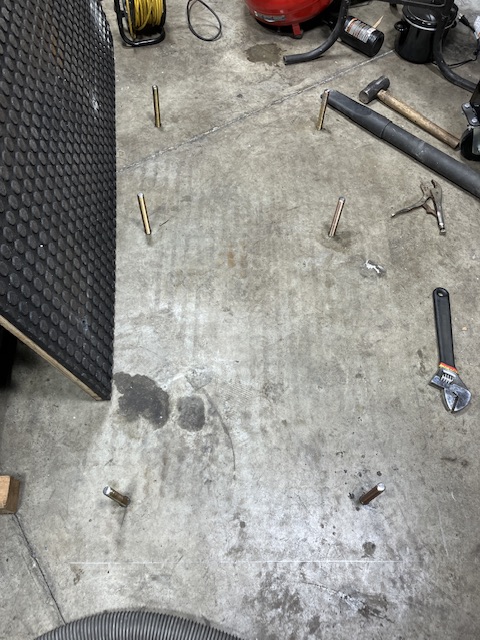
Got the anchors in (and straightened).
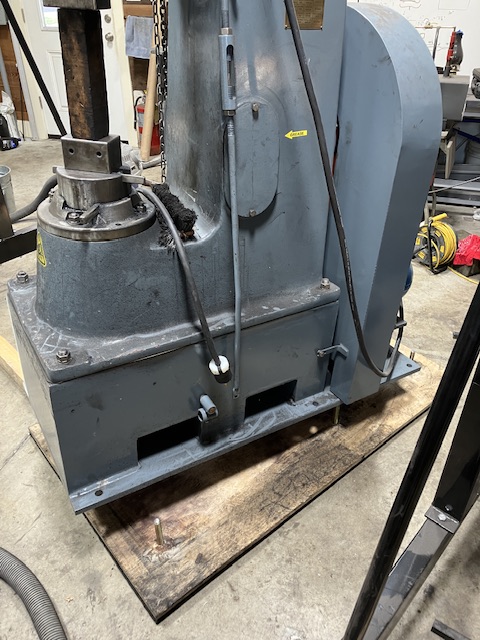
Hammer going in place.
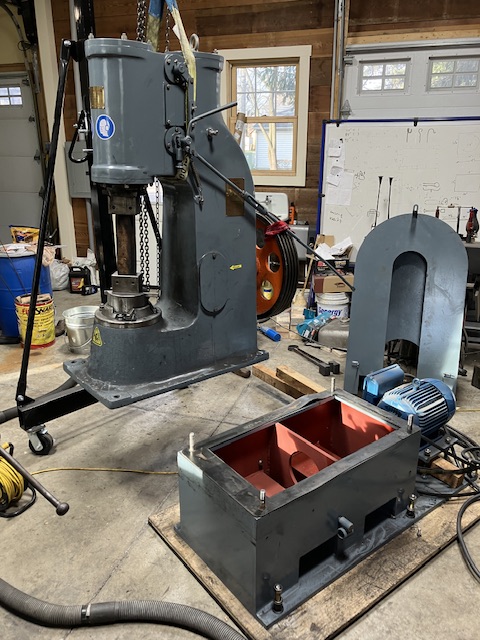
Disassembled from the base.
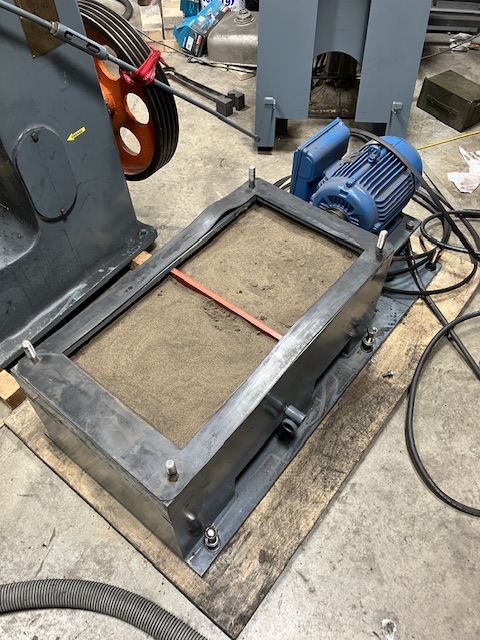
Base filled with 400# of sand. (And rubber in the belt cover to deaden that as well, sorry not picture of that.)
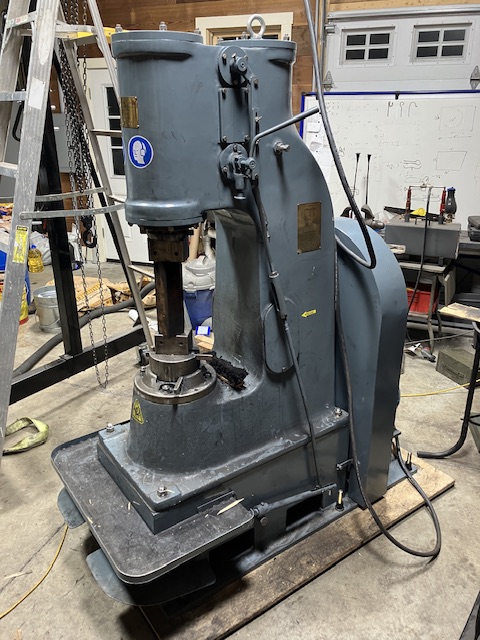
Hammer properly secured and ready for action.
On the test run it was noticeable quieter (and it’s finally not bouncing around) but I think the rubber I put in the shroud was too dense. It still rings a bit with each hit. If I run it from the side with my hand on the shroud the ring is gone. I may try something else to help more, and I’m open to suggestions…
Getting ready for the local group’s hammer in at my place in January. Still a lot to do!
Keep it fun,
David


What did you do in the shop today?
in Blacksmithing, General Discussion
Posted
John, it took me weeks of rack building, organizing, and hours of running the shop vac to get it that way! (Just don’t look in any draws or cabinets!)
If I keep hosting a hammer-in annually, hopefully it will keep me from letting it get out of control…
Keep it fun,
David